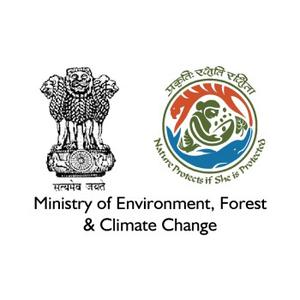Minister of State for Environment, Forest and Climate Change, Shri Ashwini Kumar Choubey in a written reply to a question in Rajya Sabha today informed that Climate change is a global collective action problem. India with more than 17% of the global population has contributed only about 4% of the global cumulative greenhouse gas emissions between 1850 and 2019. Reports from various sources, including Intergovernmental Panel on Climate Change, highlight that the challenges faced due to global warming are mainly due to cumulative historical and current greenhouse gas emissions of the developed countries. Even though, we are not part of the problem, India is part of the solution and is doing more than its fair share.
India is a Party to the United Nations Framework Convention on Climate Change, its Kyoto Protocol and Paris Agreement.Under the Paris Agreement in 2015, India had submitted its Nationally DeterminedContribution (NDC) balancing the concerns and priorities of climate change, sustainabledevelopment including poverty eradication, and economic growth of the country. In August 2022, India updated its NDC according to which India has an enhanced target to reduce emissions intensity of its GDP by 45 percent by 2030 from 2005 level, achieve about 50 percent cumulative electric power installed capacity from non-fossil fuel-based energy resources by 2030. Further, in November 2022, India has submitted its Long-Term Low-Carbon Development Strategy. India’s long term strategy rests on seven key transitions to low-carbon development pathways. One of these transitions will focus on promoting Adaptation in Urban Design, Energy and Material-Efficiency in Buildings, and Sustainable Urbanisation.
Shri Choubey said that Government of India is implementing several programmes and schemes including the National Action Plan on Climate Change(NAPCC) which comprises missions in specific areas of solar energy, energy efficiency, water, sustainable agriculture, Himalayan ecosystem, sustainable habitat, green India, andstrategic knowledge for climate change. Thirty-four States /Union Territories (UTs) have prepared and some have updated their StateAction Plan on Climate Change (SAPCC) in line with NAPCC taking into account the State-specific issues relating to climate change. These SAPCCs outline sector-specific and cross-sectoral priority actions, including adaptation and climate resilient infrastructure.
The National Adaptation Fund for Climate Change (NAFCC) was established to support adaptation activities in the States and Union Territories (UTs) of India that are vulnerable to the adverse effects of climate change. NAFCC is implemented in project mode and till date, 30 projects have been sanctioned in 27 States and UTs. As a result of various actions undertaken, India has achieved reduction of 24% in emission intensity of its GDP between 2005 and 2016.
Apart from resolutely addressing climate change domestically, India has launched international coalitions such as International SolarAlliance (ISA) and Coalition for Disaster Resilient Infrastructure (CDRI). At COP26 in Glasgow in November 2021, new initiatives under CDRI and ISA, viz, Infrastructure for ResilientIsland States (IRIS) and Green Grids Initiative—One Sun One World One Grid (GGI-OSOWOG) were also launched. Along with Sweden, India co-leads the Leadership Groupfor Industry Transition (LeadIT) for voluntary low carbon transition of hard to abate sectors
Further, the National Disaster Management Authority (NDMA) has issued several disaster specific guidelines for managing extreme weather-related disasters such as cyclones, floods and heat wave. National Disaster Management Plan (NDMP) has been formulated to assist all stakeholders including State Governments in disaster risk management of various hazards including hazards related to climate change.Furthermore, advance and early warning systems are being implemented by Indian Meteorological Department to facilitate timely evacuation in the event of floods/cyclones and prevent the loss of lives. Government of India has implemented Integrated Coastal Zone Management project (ICZMP) that has contributed, inter-alia, mapping of hazard line, Eco-sensitive Area, Sediment cell for the entire coastline of India. The hazard line is indicative of the shoreline changes, including the sea level rise due to climate change and is a projection of impact due to sea level rise, and shoreline changes over a long period of time viz. over 100 years. This line is required to be used by the Coastal State agencies concerned as a tool for Disaster Management for the coastal environment, including planning of adaptive and mitigation measures.





